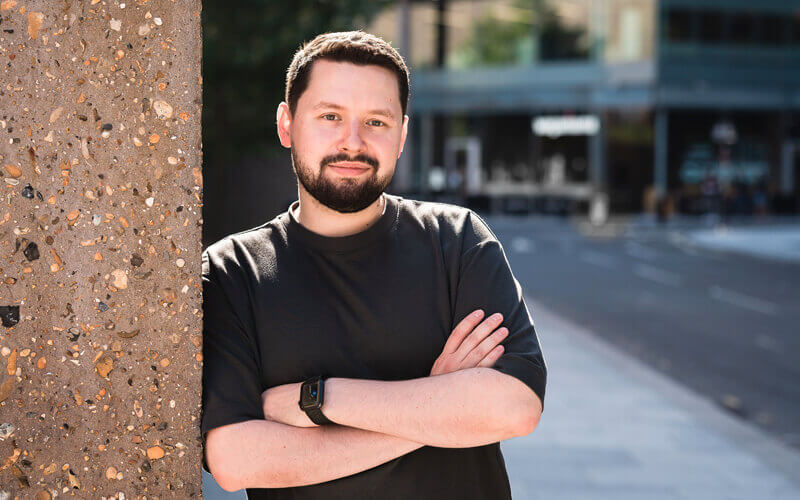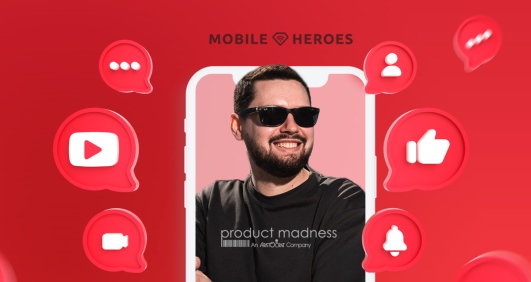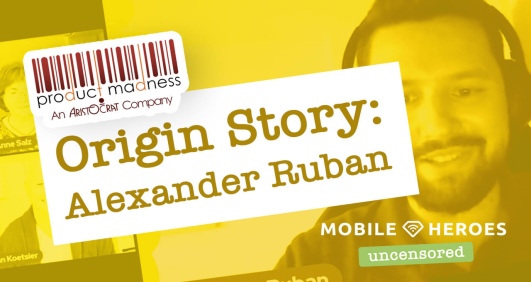Q&A with Alexander
Alexander Ruban is Head of Growth Strategy at Product Madness, a mover and shaker in social casino apps. Alexander started his UA career at popular mobile gaming companies like Pixonic and Wargaming. He soon became a team lead who worked in ad networks, influencer marketing and ad tech projects. Currently, Alexander leads a team at Product Madness that covers programmatic advertising, influencer marketing, App Store Optimization (ASO) and Apple Search Ads (ASA).
Read Alexander's latest article: "Part 2: Mastering YouTube Influencer Marketing for Mobile Apps"
How did you get started in mobile marketing?
I started gaming when I was five and received my first console - Dendy (a Russian clone of Nintendo). I later became a hardcore World of Warcraft player and decided my hobby should also be my job, landing my first job at Game Insight. After a year in quality assurance, I grew fond of marketing and began a long journey in user acquisition at Pixonic, Wargaming, Gaming Point and now Product Madness.
Since then, I have worked with game developers and project managers throughout my UA career. It gave me a helicopter view of the mobile gaming industry and inspired me to learn more.
What do you like most about mobile marketing?
There are so many opportunities that you will never get bored. Mobile marketing evolves and changes with the speed of light which allows you to test more hypotheses and approaches. It’s a fun process of iteration and tracking everything you do to get good insights.
What does it take to succeed in mobile marketing?
Flexibility, an open mind and adaptability to new learnings.
It is especially important to remain flexible when it comes to testing new hypotheses. It might be a new creative idea or a new approach to traditional UA campaigns. I tested a worldwide campaign on ad networks with $0.10 CPI, acquiring users from over a hundred countries. At first, it seemed like a waste of money. But after targeting only high-end devices, I got 2,000,000% ROAS in Guinea and positive ROAS overall. Boom.
What strategies work best to convert installs into engaged app users?
One of the best strategies for mobile games is aligning user acquisition efforts with product updates and live-ops events. When holidays like Thanksgiving or Halloween come around, you should be aware of new in-game activities planned. Will it be an in-game sale or new game mechanics? Check with your development team about the estimated impact on LTV and other metrics so you could push UA campaigns simultaneously and acquire new players who will participate in the event. At the end of the day: the core of UA is acquiring the right users who will be interested in your product, no need to sell snow in Antarctica.
In the past year, what is one tip you can share which made the biggest performance difference for your UA strategy?
Apple’s release of iOS 14.5 changed a lot for the mobile industry, and this is only the beginning. It became challenging to acquire SKAN-inventory, with many companies switching budgets over to Android. This doesn’t mean iOS UA campaigns don’t work, or that iOS users are less valuable now—we just no longer have the full picture. A tip is to try looking at overall ROI for paid and organic users and tune the iOS ad spend. And of course, to help navigate the changes—consume plenty of industry resources and media, such as blogs from No IDFA? No Problem.
What advice can you offer marketers to successfully re-engage mobile app users?
Segment your audience and test different approaches for each group. For example, assume you see a new game update adding X amount of high-end content. It might be good to test re-engagement for players who consumed most of the previous content but recently quit playing because there is nothing else to do in the game.
What’s your top tip when it comes to mobile ad creative?
For mobile videos, I always stick to this sequence:
- 1-3 seconds of eye-catching elements to ignite curiosity
- Followed by graphic content and gameplay
- End the video with a solid call to action
- Always test new creatives and replace the worst performing ones. Use reliable data to make such decisions.
What advice can you offer to help marketers combat mobile ad fraud?
Explore anti-fraud solutions on the market. Many of them provide a detailed explanation about different types of fraud and how to detect it. Start asking your vendors to explain the types of fraud like cookie-stuffing, event simulations, bot farms. And, don't hesitate to request refunds when you do find fraudulent traffic.
What are your top 3 go-to resources for keeping up with the mobile ad tech industry?
I suggest TechCrunch, Mobile Dev Memo, and all of your partners’ blogs.
























